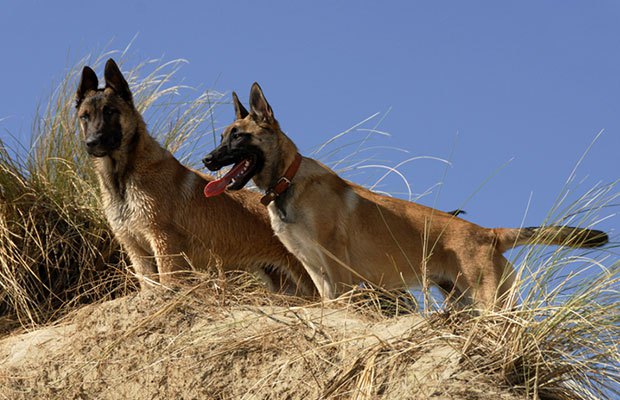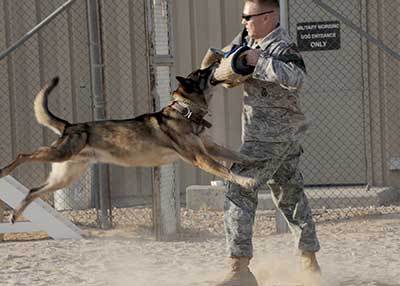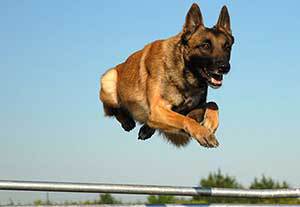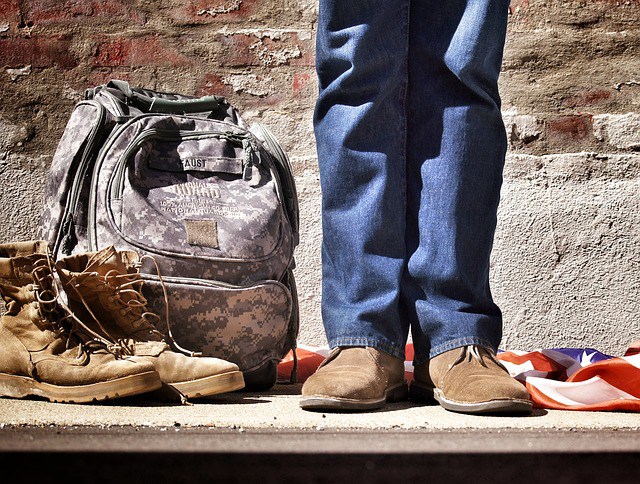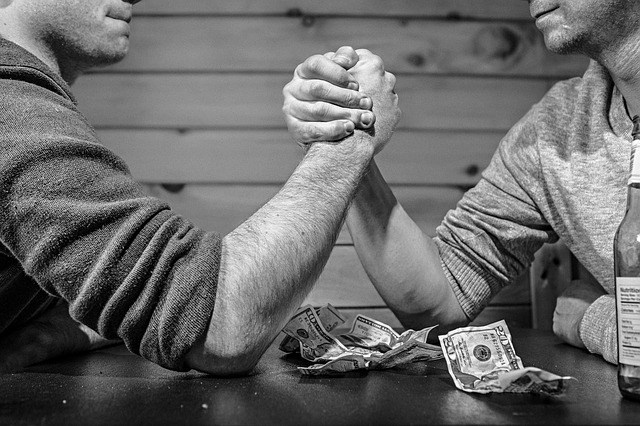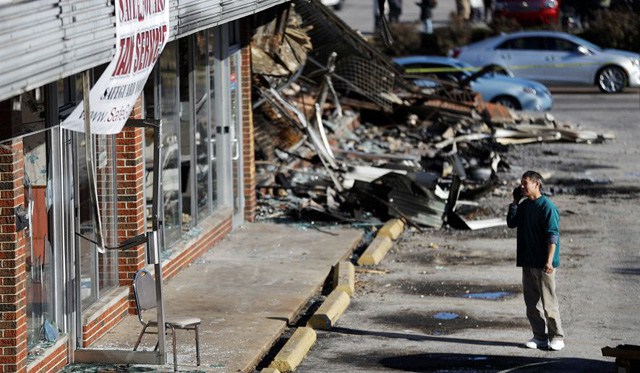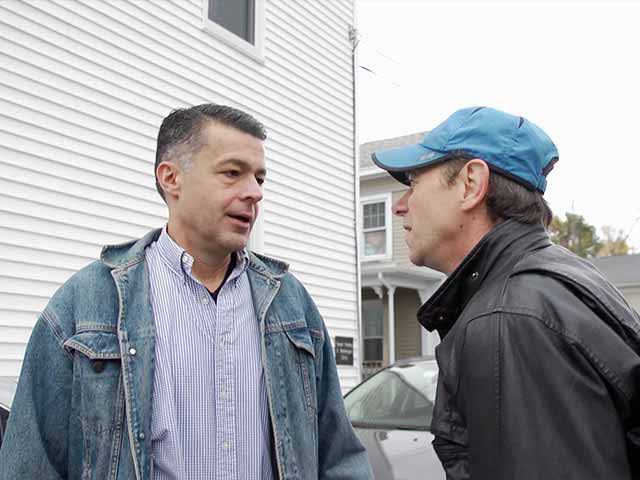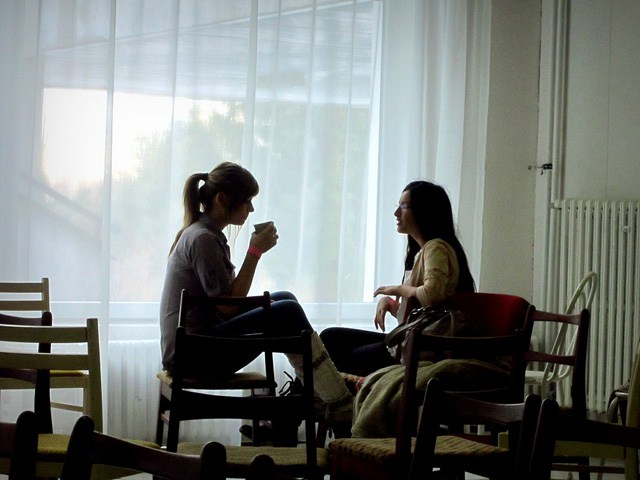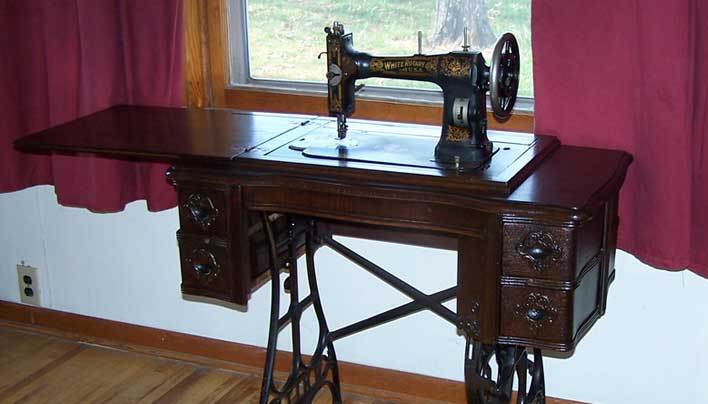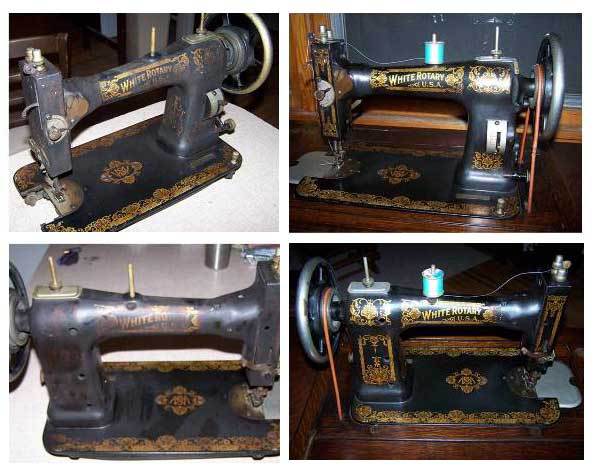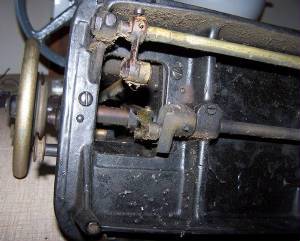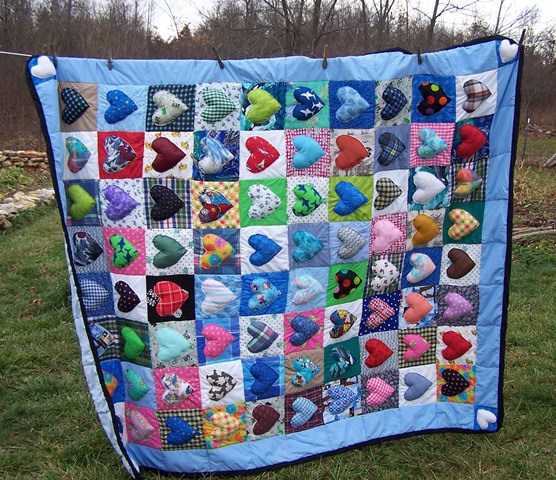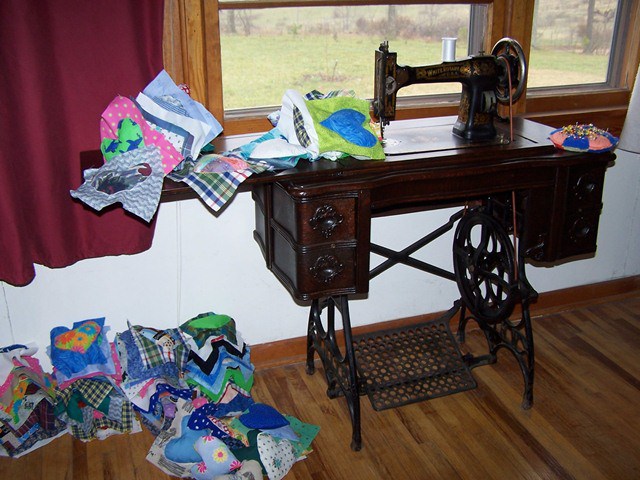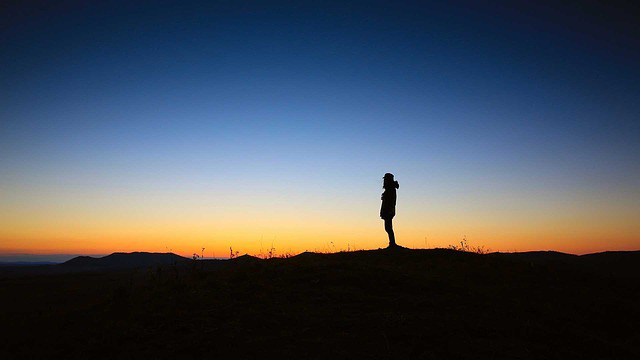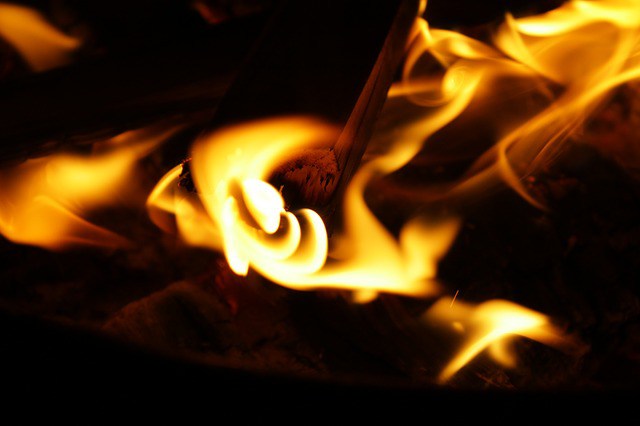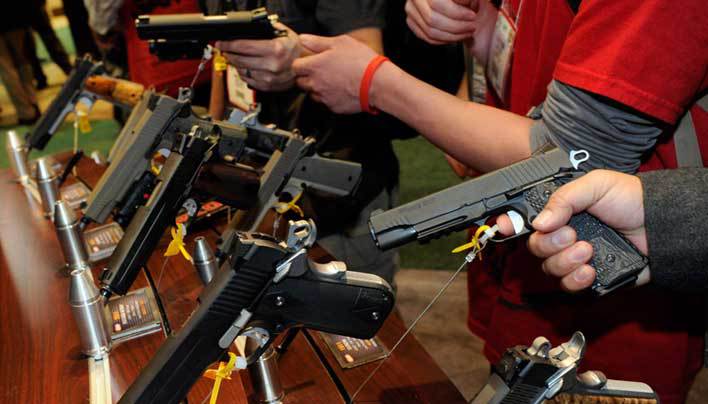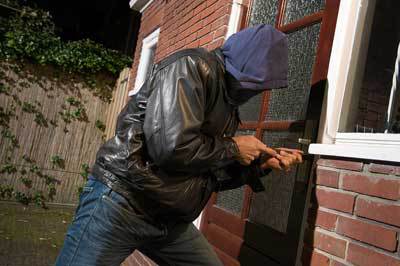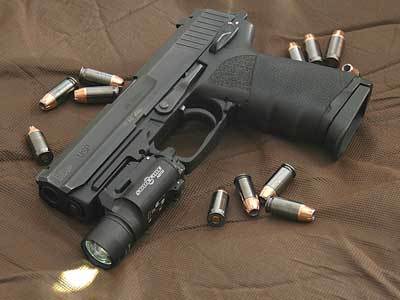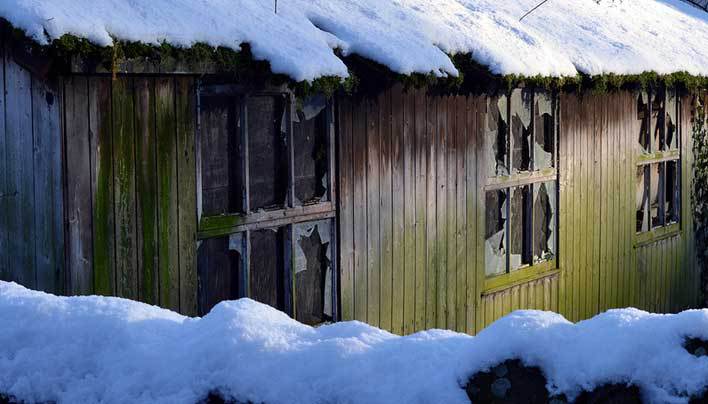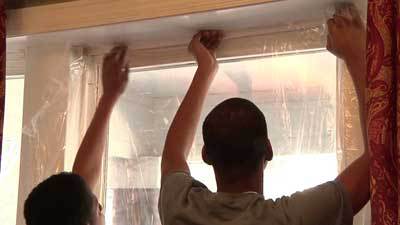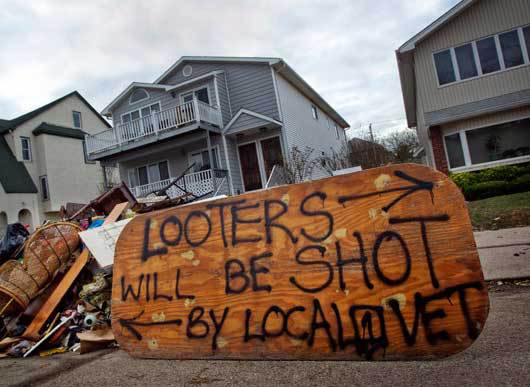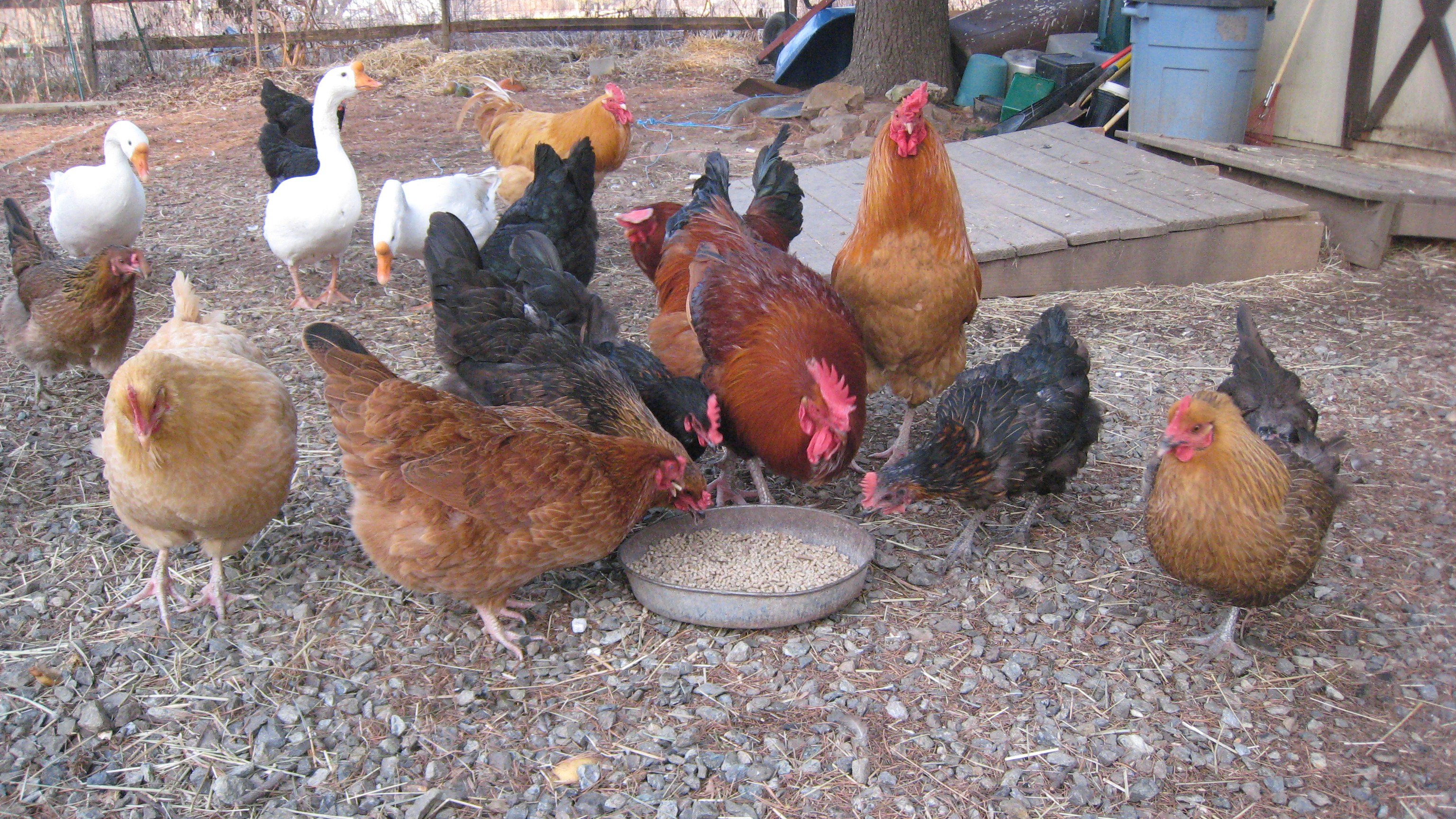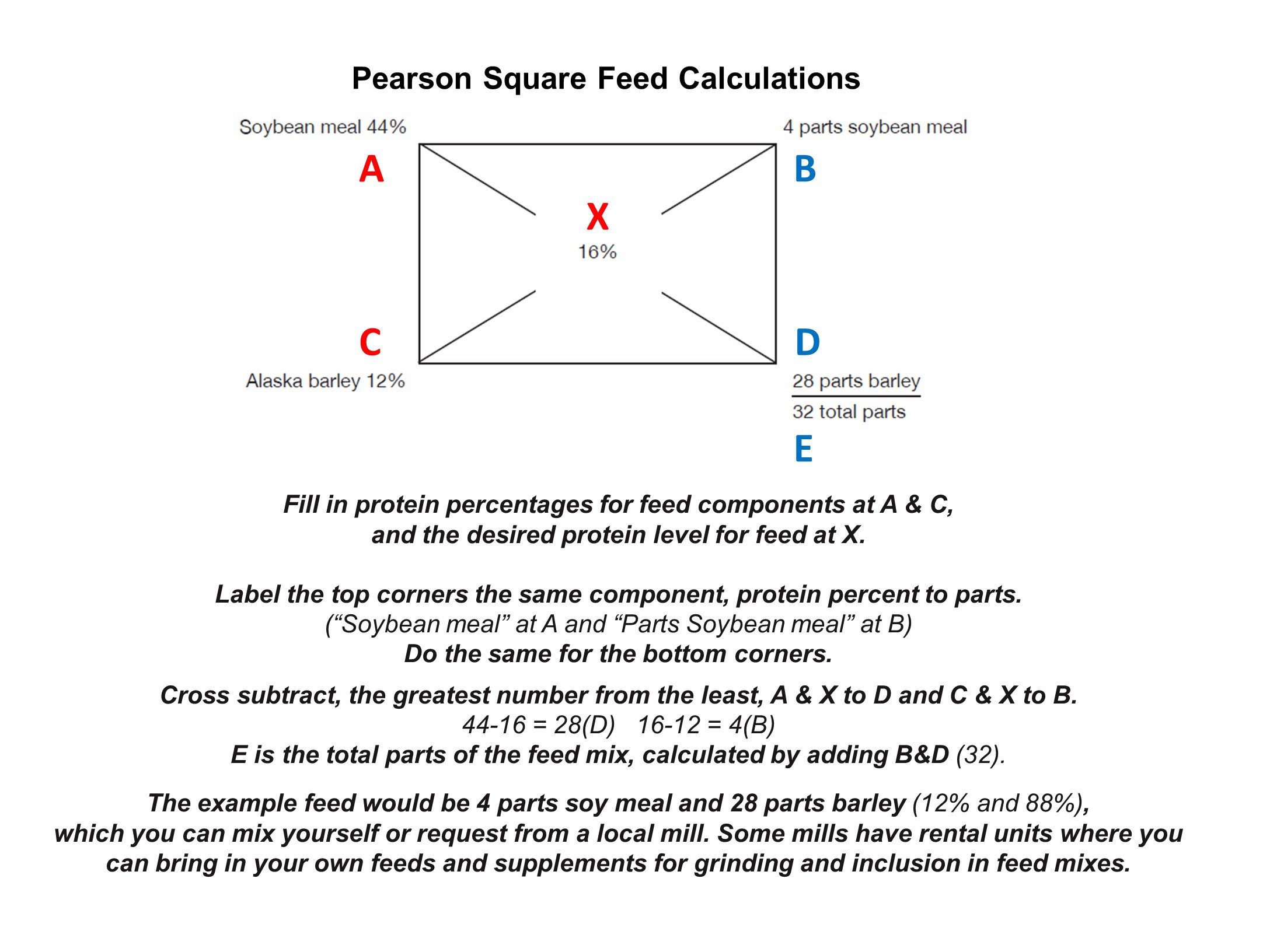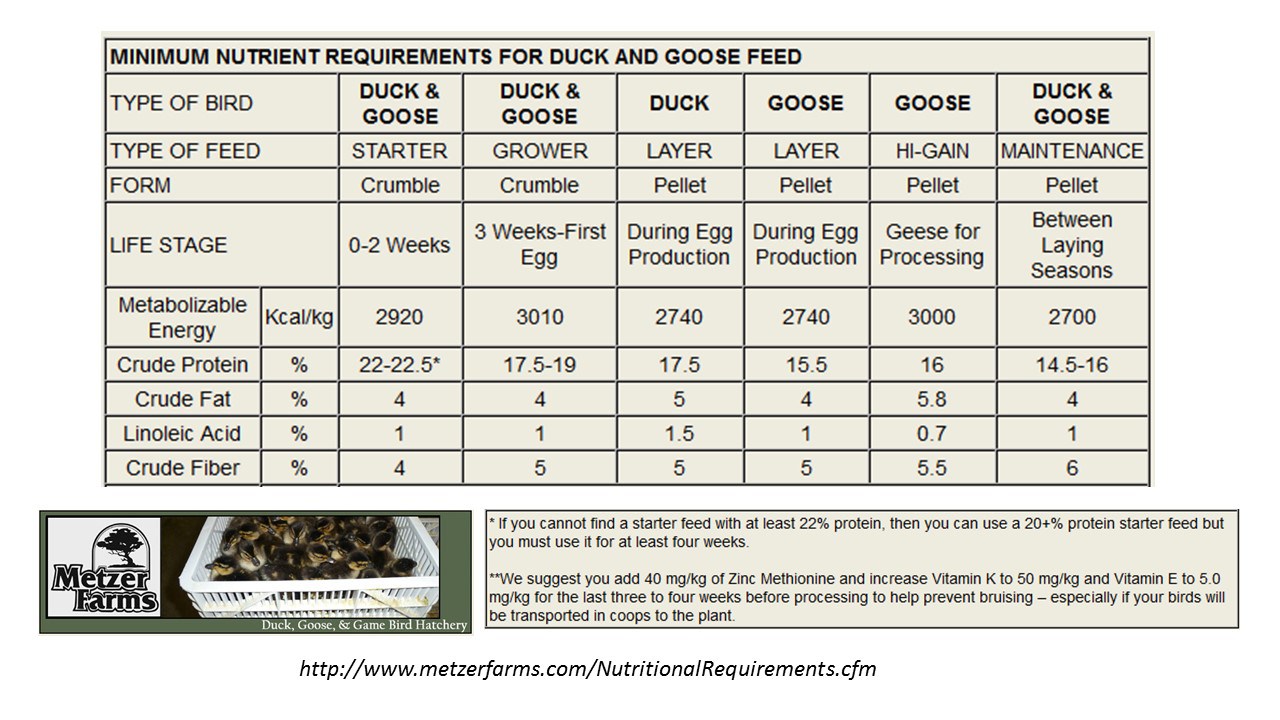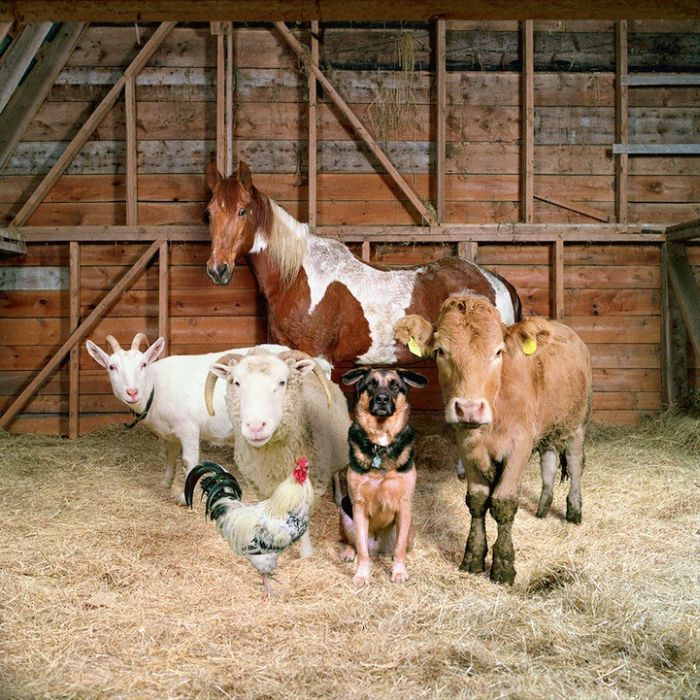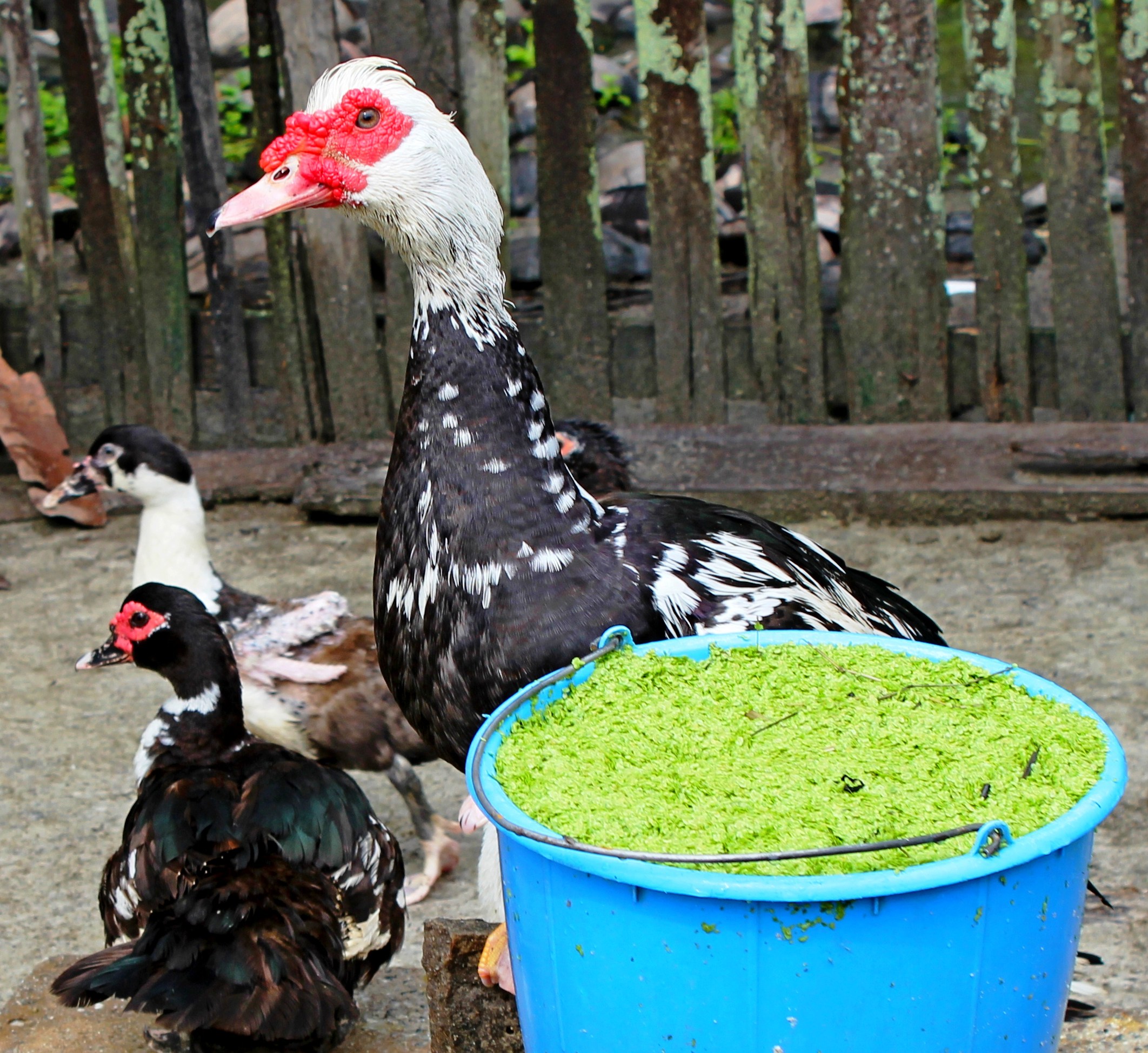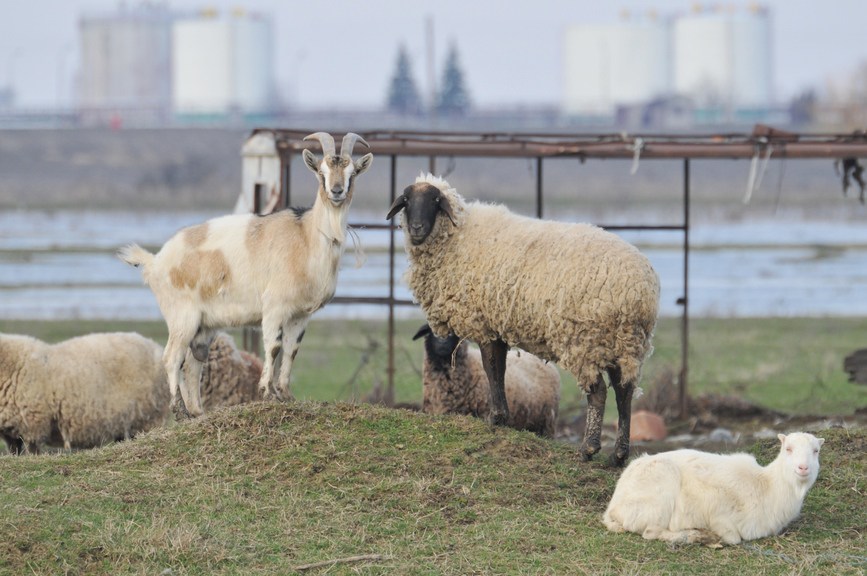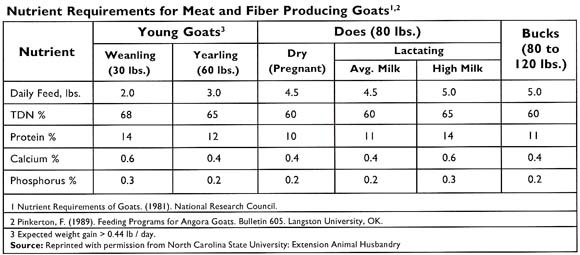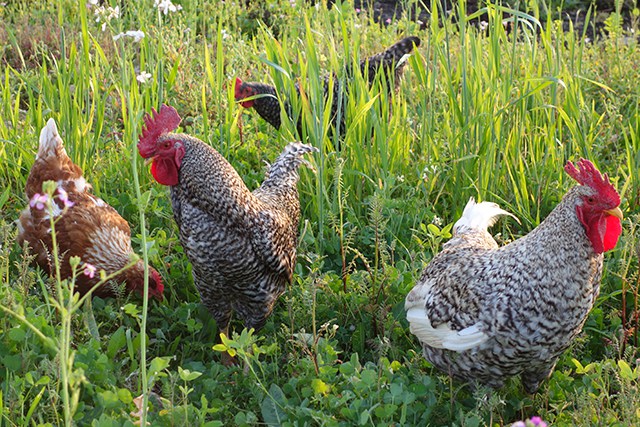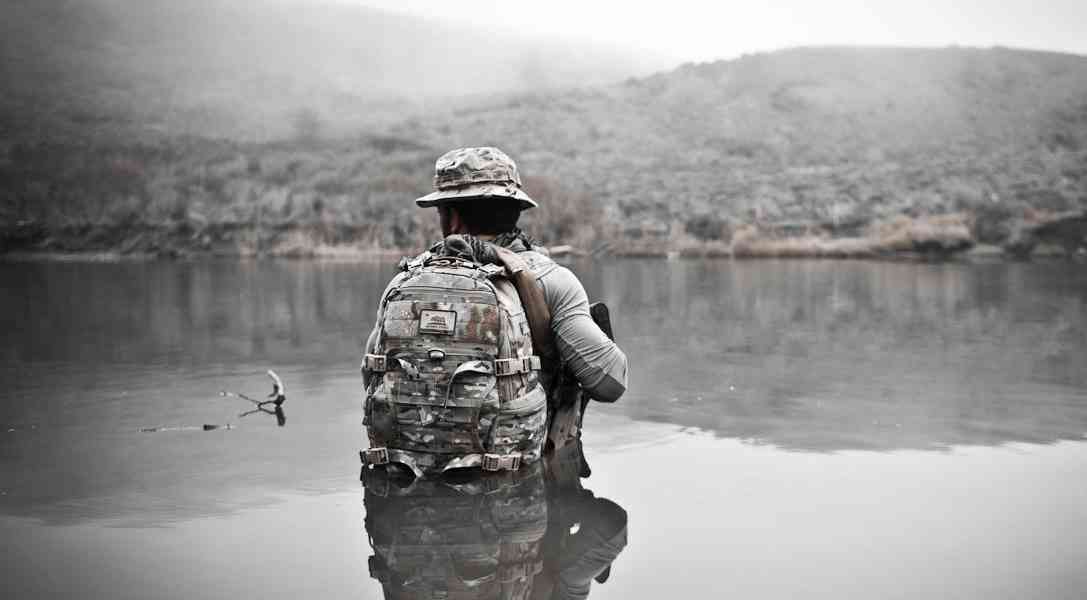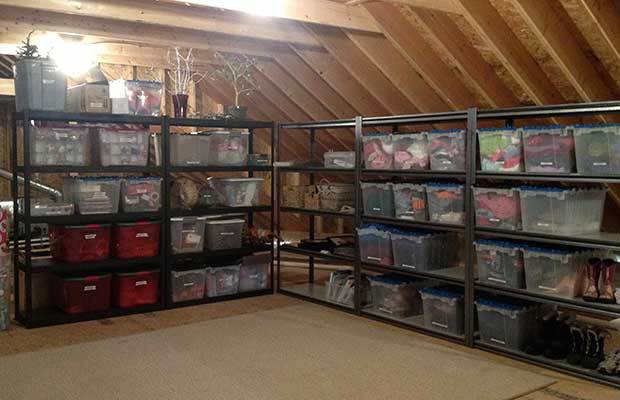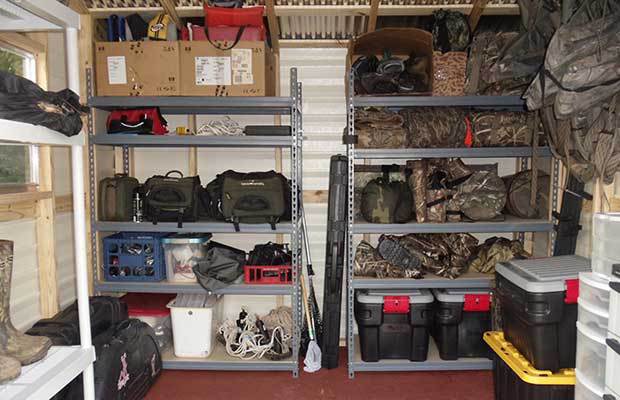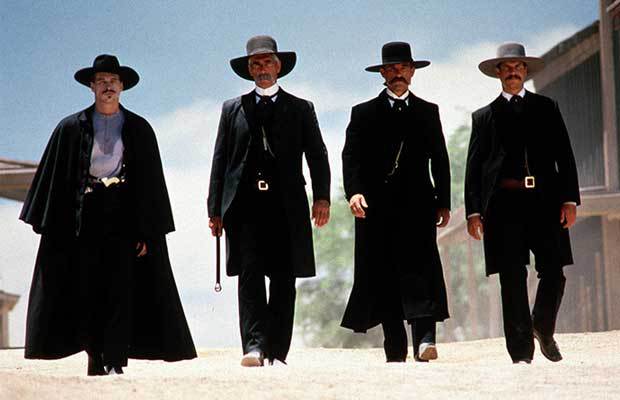You’re going to want to read this in order to put the following 10 points into context; regardless. Some will read it and agree, some will read and disagree, some will debate intelligently.
Preparation to Act: 10 Important Things to Know About Violence
- Violence is not a bad word. It is just a word.
- Violence is neither good nor evil.
- More violence, sooner.
- “Use of Force” could just as well be “Use of Violence.”
- “OODA Loop” is the single best but most frequently misunderstood term in the profession of arms.
- Action may be driven by conscious and subconscious emotion, but does not depend on emotion to occur.
- A cryptologist, a psychologist and a Franciscan monk continue to shape how we fight.
- Training for violence is important, but training for what leads up to violent action is more important.
- Violence should, if justified, be used with neither hesitation nor regret.
- There is a silent A in OODA: Acceptance.
Violence
The word Violence conjures different feelings in different people. For some it has an automatic negative connotation, something to be avoided or shunned for the visions, memories or sensitivities it invokes. For others, it speaks of a tool; the physical application of force to reach a desired result. Still others share both feelings, both views. For those of us who carry a firearm to defend our life and the lives of others, violence is a possibility that should be viewed as an eventuality. Violence is a neutral term describing the willful and intentional use of a physical power. Because we are emotional by nature, we apply an emotional meaning to the word. We don’t do this intentionally, and we don’t make the decision consciously (for the most part), rather our emotional view of violence is shaped by who we are; our experiences, upbringing, religion, fears, environment, objectivity and subjectivity. It becomes implicit before most of us are conscious of the subject, though ever changing by our continued experiences in life. The view of violence, for those who have not used it with the intention of seriously injuring or killing another, is often esoteric. They may have an understanding of the steps to take, the methods, tools and techniques, but not the end result of those actions. This lack of explicit experience is both a blessing and a hindrance, and it is something we all have to face at some point. Those lucky enough, or those willing to seek it out on their own, can do so in training, provided that training prepares them, as realistically as possible, for what they will encounter with a real life use of violence.
Preparation for violence is both mental and it is physical. Preparation is the total sum of training and practice that should be pursued by any student of force. For training, there are many taboos about how we speak on the topic of violence, and some terms are taboo for good reason. But the problem with a taboo is it assigns a negative view to a term that may describe an otherwise positive or neutral action. Instead of kill we have incapacitate, even though any upward thinking person knows that the most efficient way to incapacitate a threat is to, well….you know. So let’s see if we can avoid viewing our taboo words as taboo, as well as those Politically Correct as politically correct words. These were undoubtedly chosen by a well degreed committee with perhaps zero experience to preparation to choose such a word. Let us instead focus on the simple and direct preparation for violence by those of us willing to use it.
Violence isn’t evil, and it isn’t good. It merely describes an action. The same as force, though we say use of force, not use of violence. Why? I don’t know who made the decision or how long ago it happened, but at some point someone decided on the following naming convention: force is for the good guys and violence for the bad guys.
Fine, they ultimately mean the same thing but only the word violence conjures the emotional connection you have to realize in order to accept it as a tool. There simply isn’t the same emotion assigned to force. Semantics? Perhaps, though consider that all those catchy shirts, tattoos, slogans, morale patches and stickers don’t throw around force as a motivator. Sure, the head shed wants it to be a bad word but the alpha in all of us recognizes it for what it is; an explanation of something we all will gladly use to defend life. I’m not going to use force, I am going to exercise extreme violence so long as that violence is justified, and I will continue to use it as long as it is justified.
In my personal and professional opinion, that is the mindset to have and a mindset I fear we are losing, especially in the civilian world (I’m talking to the cops, too). This is in large part due to the political and “progressive” nature of our legal system and the affects it has on teachers and instructors. The military is somewhat immune from this pedantic shift, but whether this continues (and for how long) remains to be seen.
The study of the use of violence (or you can use force, if you like) has come a long way. Every student of the gun (and martialists) have been introduced to the psychological and physiological research that is the continuing result of decades of study—study into the application of physical violence against an enemy.
I don’t think I’m supposed to use enemy either.
Don’t get me wrong, I celebrate every bit of research that makes defending my life easier and makes me more effective doing so. The dark side, so-to-speak, of some of this science is that it attempts to substitute itself for actual experience. It needs to be driven to the audience in a way that they can relate to and apply it; unfortunately this frequently does not happen. What I mean to do now is lay out, as straightforward as possible, the process we go through in a use of force. Some of this science and theory you may have been introduced to before, and some will be brand new. This won’t be a short journey, but I will tie it together in the end and give an as complete picture as possible.
The curious case of the OODA Loop.
I can’t think of a single mental process more examined, charted, spoken on and misunderstood than Colonel John Boyd’s Observe-Orient- Decide- Act Loop. OODA is a series of time competitive cycles that lead to an action; but what the hell does that mean? Let’s break it down.
Observe: you perceive a stimulus with your senses, usually sight, though sometimes initially by sound. This stimulus can be the presence of a bad guy, or the actual observation of a person or known bad guy going for a weapon or making a furtive movement; it can also be the audible perception of a threat, or the mechanical sound of a weapon being handled. Observation is a potential loop. Each new stimulus forces us back to Observation.
Orient: This is perhaps the most misunderstood but the single most important cycle in the OODA loop. Orientation is where we process our observation and focus on its source. This is the critical moment where our emotional views, upbringing, religion, training, experience, environment, physical condition, mental condition, fears, conscious and subconscious knowledge are weighed against our observation. This is also the first point where our Sympathetic Nervous System will activate (if not already activated) to prepare us for a fight. The sum of who we are is going to seriously affect the next step in the cycle; meaning that if we are not prepared for violence, we are not going to be prepared for what comes next. Orientation is a loop. If the stimulus changes and we must Observe again, Orientation will occur again.
Decide: The results of Orientation lead to the decision we make. The physical and environmental stimulus we observed will guide the decision we make, weighed against the Orientation process. What this means is that if we are not trained, or have not experienced a particular stimulus, our decision is going to be complicated by our mind accessing memory to search for a solution. If we are emotionally unprepared for the observation (not committed to the use of violence against another person), this will further delay or completely prevent a timely decision. Our decision is going to be based on the specifics of our perception (observation) and what options we have available to us to confront it. Like Observation and Orientation, Decision is a loop. If the stimulus changes, all must be processed through again.
Act: Action is the end result of Observe, Orient and Decide. It is a process that occurs in a predominantly subconscious and very short period of time. Action is where weapons are drawn and used, commands are issued, punches thrown, or where the terrible collapse of mental processing occurs and nothing happens. This is where most people live and train, the physical acts. Action is driven by conscious and subconscious emotional responses, but it is not dependent upon emotion to occur. It takes the same amount of time to turn the page in a book as it does to draw a weapon; the urgency of the latter is applied by emotion, self-preservation and training. Just as the other steps in OODA, Action is a loop. Any change in the stimulus and the process begins again.
This is how I view OODA and how I explain it. OODA is infallible in its concept, but convoluted in its application because most of the steps that take place during the process can’t be consciously appreciated. Sure, the first time any of us get schooled in OODA we nod along, but how many of you honestly understood it the first time it was laid out for you? If you didn’t, it was probably more about the fact that we are unable to pull fractions of a second out of our brain to compare them to the model than it was about the instructor’s inability to teach (or your ability to comprehend). OODA is all about time; it’s an expanded explanation of our reaction time process and the segue towards more psychologically focused training. OODA is also very much about minimizing emotional investment in anything that isn’t the direct application of violence when violence is needed. But OODA doesn’t stand alone to shape the total picture; for that we need a cryptologist, a psychologist and a Franciscan Friar and no, I’m not kidding.
Paying attention and making decisions.
Claude Shannon isn’t a name many of you are likely to know, but his touch on the world is all around you. See, Shannon was a mathematician, cryptologist, and electronic engineer working for Bell Labs during WWII and among some of the other amazing things he did, he developed what became Information Theory after the war. Information Theory is based on human communication and reconstructed it to assist with data transmission. Shannon’s Information Theory is nearly everywhere you look and you may not even realize it. Information Theory, simply put, states that the transmission of information at all times should remain as simple as possible (it’s also the basis for all telecommunications and search engines on the planet, which makes him the Tesla of computers and phones). The most common words in language are often the shortest and because the most common words only assist in the construction of a point, a listener could miss portions of the sentence and still glean the meaning. What this means is that our perception of a stimulus need not harbor on conscious observations if we have trained and practiced for similar situations; basically if I have heard a sentence spoken before, I need only hear parts of it to glean the meaning. Information Theory isn’t concerned with the intention of a message (the intentions of our bad guy) only with his actions. For the quickest mental path through OODA, Dr. Shannon gives us the groundwork to strain out the emotional roadblocks we encounter during Orientation. How do you consciously use this theory? Bear with me.
Doctor William Hicks gave us Hicks Law (actually the Hicks-Hyman Law, but Hicks gets the credit thanks to history). Hicks Law is a concept I’m sure most of you are familiar with, but for those of you who are not, the Hick Law focuses on reaction time when making a decision. The more choices a person have available to them, the longer it will take them to make a decision. For the use of force, this is important not only in regards to reacting to a threat and deciding on a course of action, but being confident in the ability to do so. The number of choices is based on training, equipment and what you are actually reacting to. Emotional concerns, our conscience or a lack of confidence can and does complicate the decision making process. Further complicating our decision making process is a lack of sensory information, if present, which can slow the Observation and Orientation phase of OODA.
Once the mind has Observed and Oriented, a Decision must be made. The time from Observation to Decision is measured in milliseconds, between 160-390 milliseconds (depending on if the initial observation is audible or visual, audible usually providing a faster reaction time Robert J. Kosinski , 2013). Observations in low light extend reaction time (and have other particular effects on perception). The selection of a decision according to Hicks is effected by the number of choices; for each additional choice, the mind takes an additional 25-38 milliseconds (Sternberg, S. 1969). These numbers are somewhat academic in the fact that they do not take into account emotional considerations and psychological stress associated with a lethal force encounter. But to you, how much does that matter? Well, the first part of the problem in appreciating Hicks Law was already mentioned when we looked at OODA; we are not able to examine fractions of a second in our mind because that is not how we consciously process time. We also must consider that reaction time is delayed by a lack of a solution; meaning that if you are encountering a situation you have not trained for, your mind will not find a solution in short term memory and be forced to call up long term memory, or if you are unfortunate enough to be lacking a choice due to lacking a piece of equipment. These problems are also measured in milliseconds (best case scenario). Given the choice of an equal reaction time to my threat, or a 190 millisecond head start, I’m going to take the head start every time; which is why understanding OODA is so important, though some of you are probably wondering what does this have to do with being prepared for violence? Bear with me a little longer; first, our Monk.
Willaim of Ockam was a philosopher and a Franciscan Friar with a lot of time on his hands. This was because he lived through the late 1200s into the 1300s, a time when most people thought (and a few read) for entertainment. Ockam didn’t originally invent what has come to be known as Occams Razor (it goes back as far as Aristotle) but Ockam gets credit for it because he used it often and to great success. In the simplest terms, Occams Razor states that the simplest explanation for an event or observation is often the truth. Meaning that we humans like to draw neat little lines between a question and a conclusion (or assumption)
An example would be this: when you hear a diesel rumble coming up the street you think 18-wheeler, not dump truck. It may very well be a dump truck, but you need more information before you conclude that. You could make a more complex assumption (or theory) at the sound of a diesel engine, but the time to do so and the additional factors in which you could be wrong creates needless thought processes. From Occams Razor (in a roundabout way) came The Principle of Economy, stating that “Scientists must use the simplest means of arriving at their results and exclude everything not perceived by the senses (Ernst Mach).” Now how does this apply to OODA, or Hicks, or Information Theory? They all work together and do so based on the fact of human nature, that everything about another person’s intentions is an educated guess at best. We simply cannot know, at any time, what another person intends to do without lending a degree of blind trust to their words and actions. So to put it in a more useful example, someone running at you with a raised bat likely means you harm, as opposed to thinking that they may just be in a hurry to show you their bat. This is the intuitiveness of the Razor, it is the guide for safe assumptions based on what our senses perceive.
Perception is all we have to make decisions absent placing a degree of trust in other’s intentions. Is the Razor fallible? Of course it is, so is OODA, Hicks and Information Theory; fallible due to the tricks of our own mind, a lack of information, too much information, or misreading the intentions of another person. Perception is the first two steps of OODA, and it’s where the mind forms its plan, makes a Decision and Acts.
The key to acting efficiently and quickly, the key to being prepared to use violence is here.
Knowing Harm and Knowing When to do Harm
Our mindset towards violence must be one of acceptance. I accept, and expect, that I will need to visit violence on another human being if their behavior and/or actions leave me no other choice. This is what I train for and practice for. The more training, the more practice, the better prepared I will be and the quicker I will be able to recognize the need for violence. Emotions can cloud our decision making process, or assist in our response to violence. An objective fear of injury promotes a faster reaction, which is how we have been able to survive on this planet for so long despite being ill equipped to, say, kill a bear or tiger with our opposable thumbs.
Those without healthy objective fear would make a series of stupid decisions and may not even make it out of childhood. Fear attunes the senses, it is what activates our Sympathetic Nervous System and prepares us to fight, flee or freeze. It is my personal and professional belief that an acceptance of the need for violence, no matter who it may need to be used against, promotes a faster reaction time to a threat. It minimizes nonsensical choices in what force we will or won’t use and builds resolve into the decisions we make that lead to our actions. Outside of reality based training, such as that conducted with a Non-Lethal-Training-Ammunition in scenario structured events or hand-to-hand training, personal training experiences where violence is used in reaction or anticipation of a threat’s behavior are very, very limited. Cardboard can’t comply, can’t shoot back, and even if it may move, it’s usually in a very unrealistic and somewhat comical way. Because of this, much of our mental preparation for the use of violence is either personal or through the pursuit of realistic training.
For the military and law enforcement, it’s a unit/department decision and quite often what looks like a good idea from the top, is watered down and prone to ineffectiveness at the bottom. Things become more and more political-correct driven and because of this, your willingness to use violence at the moment it is needed is threatened by poor training, poor practice, fear of litigation or simply not knowing what to do or when to do it. Why? Because you have not been prepared for what you are encountering.
Cardboard can’t comply, can’t shoot back, and even if it may move, it’s usually in a very unrealistic and somewhat comical way
This is where personal preparation is more important than anything. First, know the law; know when you can use force to defend your life or the life of another. Know it well, memorize it and then train for the exigencies.
More violence, sooner.
This is where some people get uncomfortable with the conversation, and that’s fine. I don’t have a crystal ball, therefore I cannot see the future. I live on the premise that anyone who behaves in a manner that threatens my well-being or the well-being of another will continue to do so until stopped. Since I cannot ever reliably know what another person’s intentions are, I can only act against their actions or their failure to listen to reason. Can I warn someone to drop their weapon before I use force? Of course, in fact for law enforcement, we have to when feasible. The definition of when it’s feasible is left to the individual officer and the totality of the circumstances, as it should be. The same should be true for every responsible citizen carrying a weapon for self-defense.
Your bad guy makes the decision to have violence visited upon them through their actions, the decision you have to make is when and how much. As a law enforcement officer facing an armed threat that could immediately harm me or others, I have always lived with the One Warning Rule. If feasible I will give one command to drop the weapon, that’s it. Barring any additional changes in my threat’s behavior after my warning, I will use force. I see nothing gained by acting otherwise because I am not willing to play a What If game, nor wait for someone whose thoughts I do not know, have a change of heart. The longer I wait, or the more ineffective warnings I issue, the greater the danger to my safety and the safety to others becomes.
Of course it’s not that simple; because we have seen fit to yoke ourselves with polices, rules of engagement and many other administrative weights that serve to ignore the fact that Action is faster than Reaction. We have to obey these rules, but we do not have to do so at the cost of serious bodily injury or death for there is no policy that can force me to suffer injury in the name of administrative comfort. But for the ultimate sake of my point, let’s set aside policy and look at the mentality only. As an example, I present the following;
A police officer confronts an individual armed with a firearm who has verbally threatened him; the police officer has the following choices;
Do nothing (emotional response to fear, or lack of confidence)
Identify himself Issue a verbal warning to drop the weapon (trained response)
Flee (emotional response to fear, lack of confidence or conscious decision based on being outgunned)
Seek cover (trained response, emotional response)
Draw baton/Taser/Pepper spray (disparity of force decision, lack of training or lack of confidence in understanding of legal/policy options)
Draw weapon (trained response, natural response to the level of threat faced)
Obviously a police officer has more “options” to confront this situation than a soldier or citizen would, right? No. The choices are the same. Freeze, Flee, or Fight.
Now, consider that before a choice is made the threat is already in a position of advantage to use force, his weapon is in hand and he is ready to act. Should the officer issue a verbal warning while taking no additional steps to protect himself, the threat gains an additional advantage in time. He also benefits from the knowledge that the officer has the means to meet force with like force, but at least for the moment, will not. Suppose the officer draws his weapon and points it at his threat. Does this now give him the position of advantage to issue a verbal command? No. If anything, this places the officer and the threat in a tie for who can use violence first.
I have in numerous training exercises I have put officers and citizens in this exact scenario. 99 out of 100 times, the threat is able to raise and fire his weapon just before or at the same time the officer/citizen fires his and in some cases, the threat fires with no response at all from the officer/citizen. In the rare times when the officer/citizen is able to fire before the threat, the rounds still pass each other in midflight. Action is faster than Reaction because Action must occur before a Reaction can be raised.
We must process through OODA, there is no way around it.
Even so called “muscle memory” is an unconscious reaction to our stimulus. Training and repetition may build you to the point of Unconscious Competence in drawing and firing your weapon, but you are still doing so as a reaction to a stimulus.
When can, when should violence be used? As soon as it is justified because I cannot see the future. I must be comfortable with using violence and that comfort comes from understanding how my mind prepares to use violence. When facing grievous bodily harm, no other option is reasonable.
Violence through OODA
Now we tie it all together right back where we started, by viewing OODA through the lens of committing to the idea of more violence, sooner.
Observe: our senses perceive a stimulus, either through prolonged/deliberate contact (you already recognize and in some way are interacting with the threat before realizing they mean you harm) or in a spontaneous encounter (you are literally surprised by the sudden appearance of a person and their intentions to harm you). Observation is the constant feed of information from an interaction with a person. Their speech, mannerisms, body language and behavior can give you clues for safe assumptions as to their intentions. Over half (as must as the often quoted Dr. Albert Mehrabian’s “93%”) of communication is non-verbal, though verbal clues are usually present in prolonged encounters.
Remember Information Theory? This is one part of OODA where IT can play a huge part. We need not hear the entire sentence to get the meaning, nor must we know why a person’s mannerisms give us the feeling that they mean us harm (assuming a fighting stance, clenching fists, attempts to physically flank you, etc.) The more we know about the subject (in this case, verbal and visual clues) the more we are able to fill in the “blanks” on what our threat may intend. Of course in a spontaneous situation, the immediate aggressiveness of our threat makes rapid recognition through good training critical to a fast reaction.
Remember Occams Razor? The simplest explanation for a man to square into a fighting stance is that he intends to fight. Observation is also when your Sympathetic Nervous System will likely activate upon observation of a threat. Observation continually loops back to the stimulus to gather new information.
Orient: Orient is comprised of who we are, and how we have been trained. A man will hold his hand in a certain way when reaching for his wallet than when reaching for a gun. This is largely explicit knowledge, it has to be learned. Against a spontaneous threat, we are at the mercy of nature and training. Our SNS may compel us towards deciding to flee from a recognized superior threat, to simply seek cover or prepare to defend ourselves. Had you received training against the spontaneous appearance of a weapon, or pre-assault indicators in speech and body language, you will be able to progress past Orientation much faster. If a man assumes a fighting or a shooting stance, we Orient to this based on our knowledge. IT helps fill in the gaps and our friend Occam eliminates the ridiculous possibilities one would do such a thing if they did not mean us harm. Orient is where any hesitation towards violence will complicate making a Decision. Your Sympathetic Nervous System’s activation will elevate heart rate, dilate pupils, flatten the lens of the retina, narrow your field of vision, force your posture to square to your threat and begin to degrade fine motor skills. All of our collective knowledge weighs the observation while continually looping to receive new information as it comes in.
Decide: Decision may be where our first conscious thoughts take place, and where any hesitation, fear or lack of training or experience can affect the speed and effectiveness of your actions. If it is needed, this is where total commitment to violence needs to happen. Short term memory will access the reflexive, repetitious training and practice that best fits the situation if you have prepared for what you are encountering; otherwise the decision will be delayed (relatively speaking) as your mind accesses long term memory to find a solution to a problem you have not trained for or have not trained enough for. The number of tools you have to confront a situation will lengthen the time it takes to choose one (Hicks Law). Factoring in IT and Occams, a clear Observation and Orientation with consistent feedback as more information comes in will shape your Decision and help to eliminate unsafe assumptions or nonsensical explanations for the behavior of your threat. As the Decision is being made, the effects of SNS can complicate your actual reaction. Proper stress inoculation training will help prepare for the real thing when it happens. Once the Decision has been made, only additional information from the stimulus can prevent it from being carried out (such as a sudden surrender or realizing what you though was a gun is in fact a phone).
Act: The Action is about intent. It’s about violence. You cannot shoot someone “a little bit.” Action is where much of people’s training and practice takes place, the physical act of pulling (pressing, squeezing) the trigger, throwing a strike or using a knife/baton/Taser etc. We focus on the fundamentals and put holes in paper. You will be attacked 100% more often by people than paper, and our Action should always consider this truth. Action training is important, but training for what leads up to Action is far more important. Being prepared for the use of violence without reservation, the willingness to use as much violence as possible the moment it is justified will greatly solidify resolve and help reduce (along with good training and practice) any hesitation in Action. Getting to Action from Observe requires urgency, attention to your threat and a strong understanding of how emotion can aid or delay your response to a threat. When violence is justified, the Action is a response to the behavior of your threat. They make the decision to have force used against them. When it’s time to Act, do so and do so violently.
The Silent A: Acceptance.
I feel I need to be very specific in what I am talking about. In no way am I promoting the use of violence or force in a situation in which it would not be reasonable to do so under the circumstances. What I am promoting is accepting that if you have the means to use violence, the training and the desire to defend your life, you must accept that when that time comes, there are no half-measures. You must subdue or incapacitate your threat as quickly as possible. Violence will continue to be a taboo word, seeming to grow more so as time goes on. Progressive attitudes and political correctness are reshaping the way our good guys come up in the professional and private world, and it’s not for the better. I don’t want to go off on that tangent too far as that would be a whole different article, I just want to underline the point that something as simple as use of force in place of violence has a sterilizing effect and takes away from what actually happens and needs to happen. We know they are the same, yet the removal of emotion is the removal of acceptance.
What I am promoting is accepting that if you have the means to use violence, the training and the desire to defend your life, you must accept that when that time comes, there are no half-measures.
The use of violence is going to be an emotional event, perhaps before and certainly after. We can go far to prepare ourselves for the use of violence by accepting that there are situations in which it is a necessary tool and when it is necessary, resolving to use it without hesitation or regret.
You’re going to want to read this in order to put the following 10 points into context; regardless. Some will read it and agree, some will read and disagree, some

